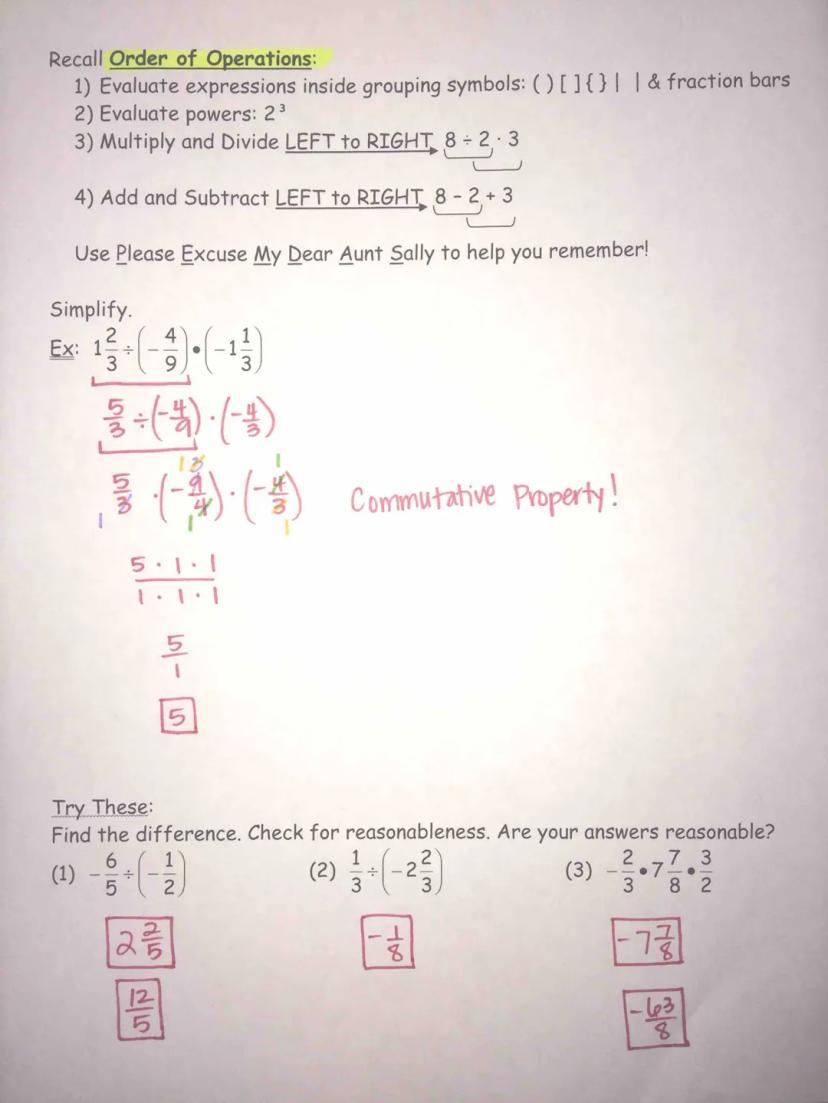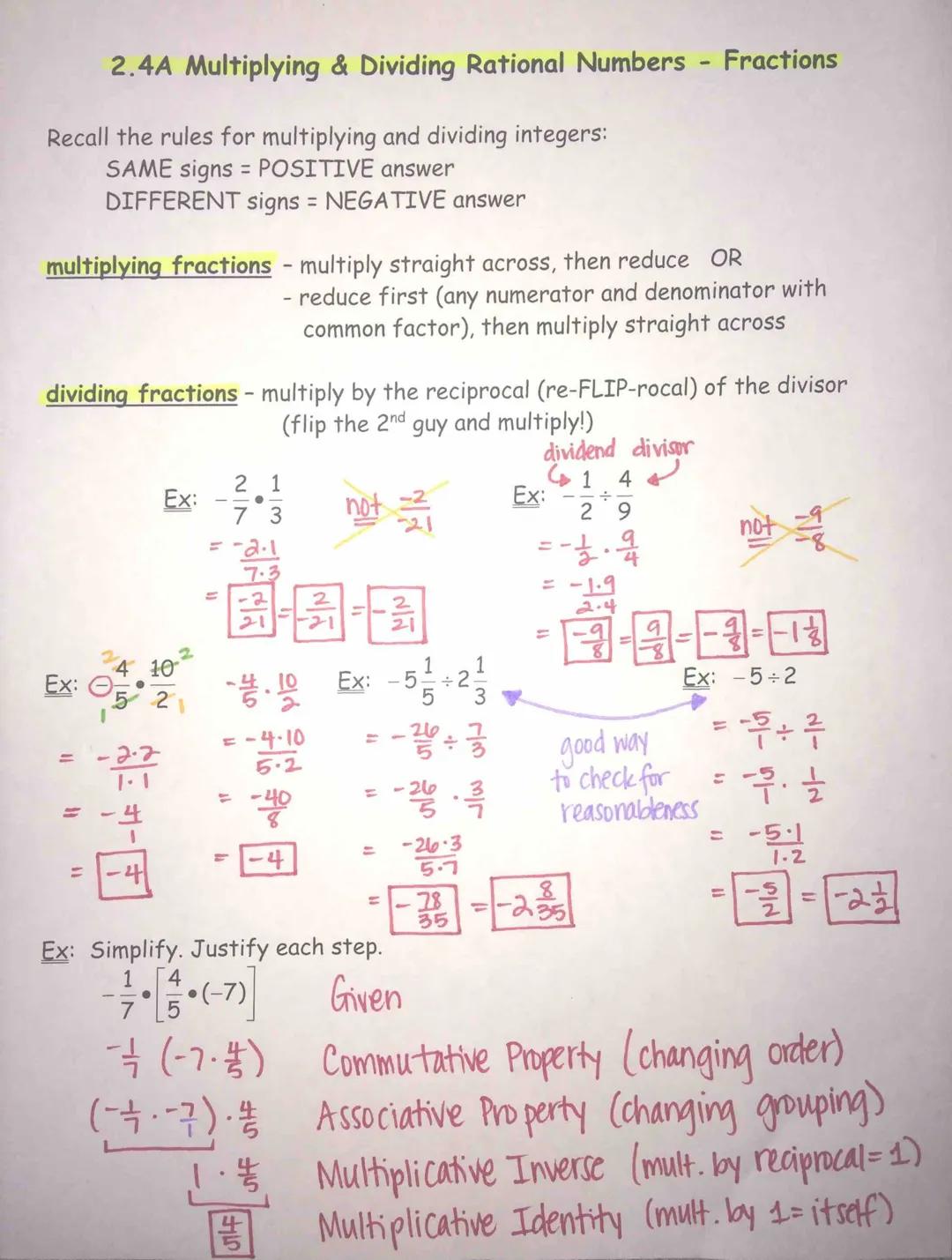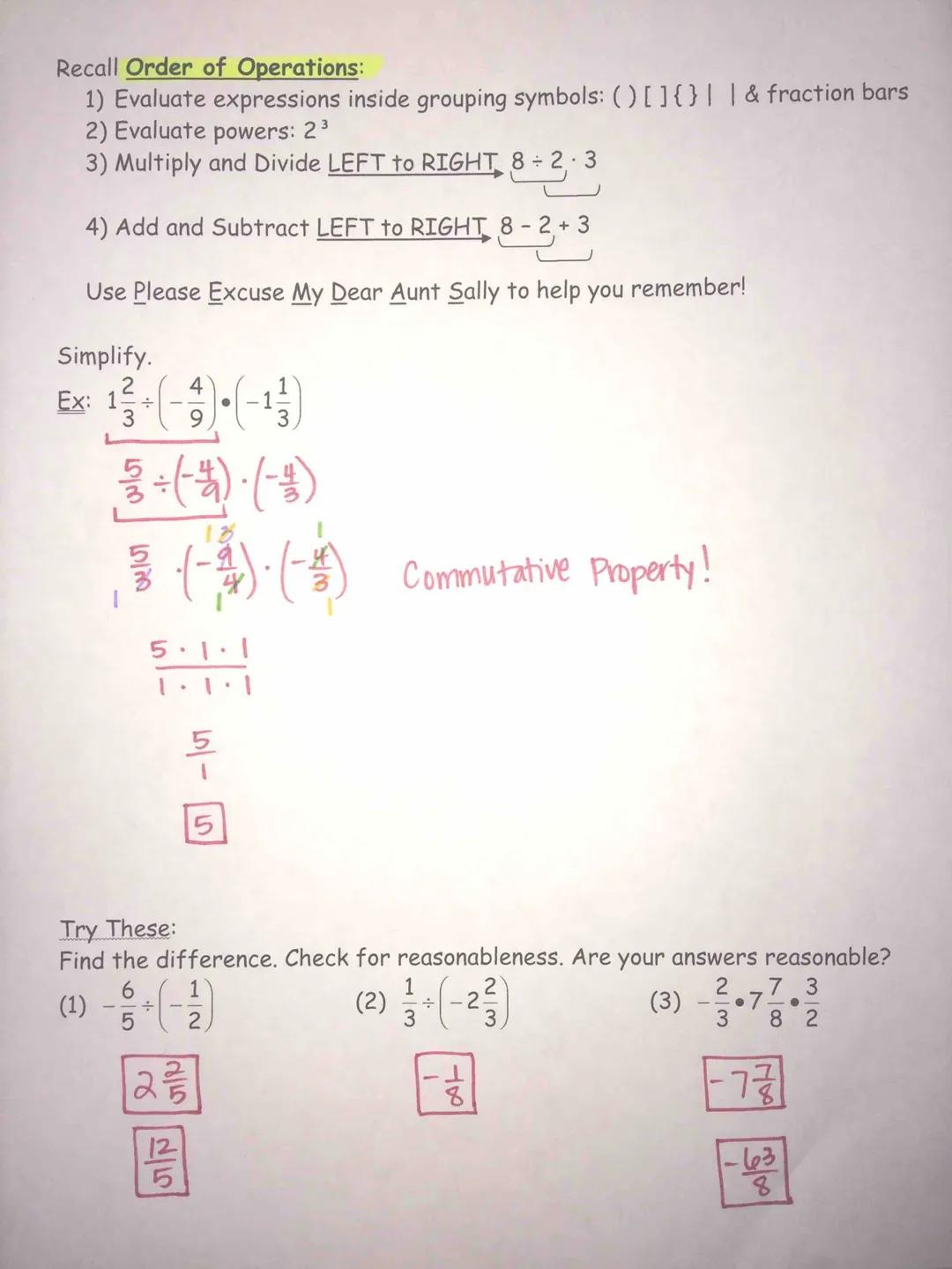This lesson covers multiplying and dividing rational numbers fractions rules and simplifying fractions using order of operations. It explains how to multiply and divide fractions, including negative fractions, and emphasizes the importance of following the correct order of operations. The lesson also touches on the commutative and associative properties in fraction operations.
Key points include:
- Rules for multiplying and dividing integers
- Techniques for multiplying and dividing fractions
- The importance of reducing fractions before or after multiplication
- The use of reciprocals in fraction division
- The order of operations for simplifying complex fraction expressions
- Application of commutative and associative properties in fraction operations





